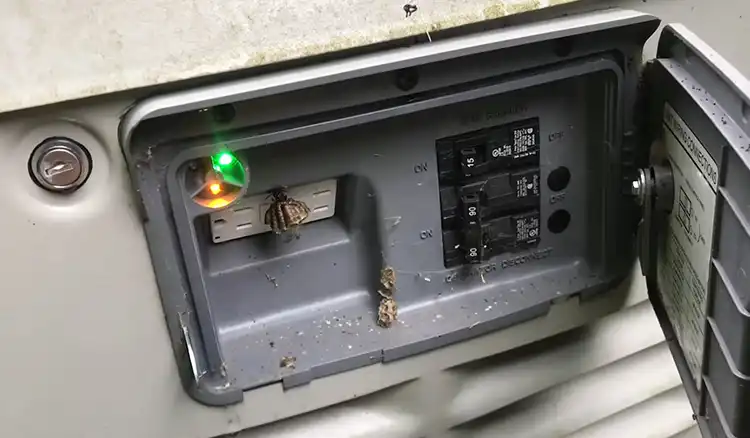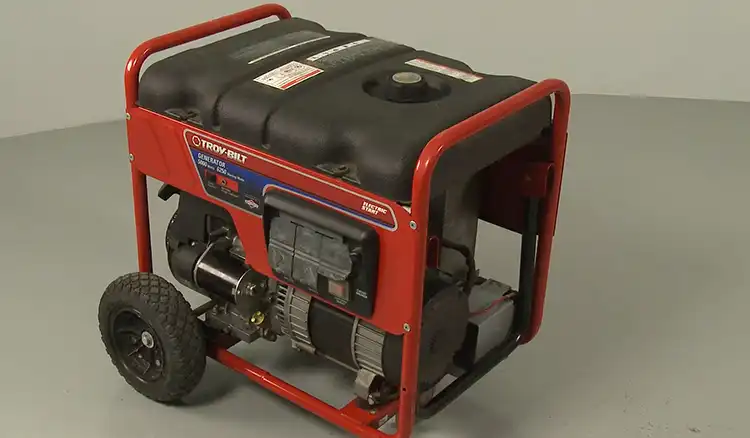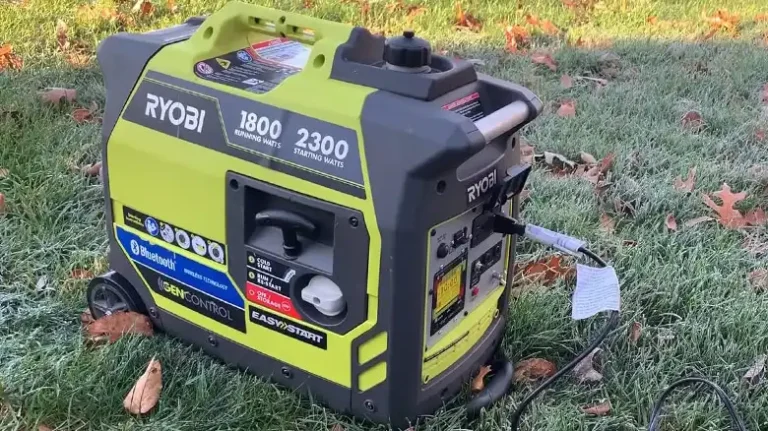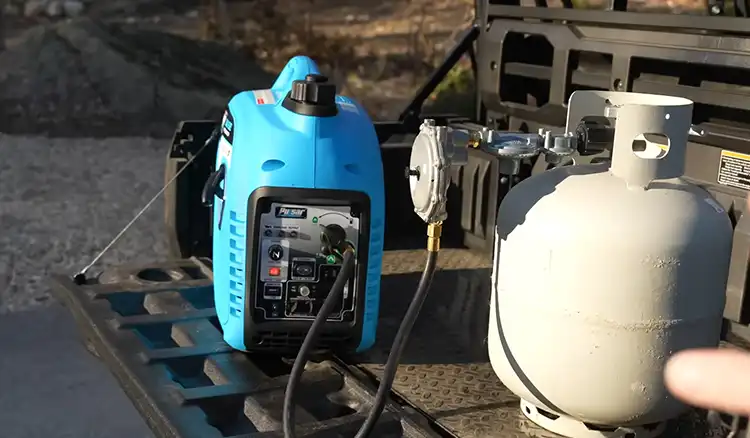Blinking Green Light on Generac Generator: Here’s What To Check
Generac generators are trusted backup power systems that use advanced diagnostics like indicator light panels. These lights monitor operation and alert users to problems. A steady green light means normal function. But a blinking green light signals the generator has detected an issue and entered diagnostic mode.
Common issues include low oil pressure, high temperatures, overcranking the starter, and controller communication failures. By counting the blinking pattern, you can reference the fault code and begin troubleshooting. With some DIY maintenance like changing oil and cleaning vents, many generator problems can be resolved. Though for major repairs, professional service may be required.
The blinking green notification light is your generator’s way of identifying issues before serious damage results. Learn to interpret the signals and provide preventative care to keep your Generac running optimally year after year. In this article I’m going to discuss briefly why the light blinks and how to respond.

Generac Generator Indicator Lights
Generac generators have an advanced diagnostic system that uses indicator lights to monitor operation and notify users of problems. Here’s a quick overview of what the different light colors indicate:
- Solid Green: The generator is powered on and functioning properly.
- Blinking Green: The system has detected an issue and is in diagnostic mode. The blinking pattern indicates the nature of the problem. The green light may be indicating that your unit is running due to a utility power loss.
- Solid Yellow: The generator is receiving maintenance or needs service.
- Solid Red: The generator has shut down due to an active fault.
When that green light starts blinking instead of glowing steady, it means your generator has entered diagnostic mode and the blinking pattern can clue you into potential causes.
What Does Blinking Green Light Indicate for Generac Generator?
A blinking green light on a Generac generator typically indicates that the generator is in standby mode and operating normally. Here are some more details:
1. Normal Operation
With the generator running normally, you may notice a brief single blink of the green light at intervals. This is a normal operational pattern, usually blinking about once every 2-3 seconds.
This baseline blinking indicates the generator is functioning properly. It is monitoring output and regulating systems like voltage, RPMs, and load.
As long as the green light continues blinking steadily at a regular interval, you can be confident your generator is operating as intended. But if the pattern changes, that signifies a problem being detected.
2. Diagnostic Mode
When your Generac generator senses an issue like low oil, overheating, or loss of communication, it will activate diagnostic mode.
In this mode, the green indicator light will blink in a pattern corresponding to the specific fault code for the problem detected. Count the number of blinks and pauses to decipher the code.
For example, if the green light blinks twice, pauses, then blinks three times, that flashing sequence indicates the code “23”. Each code relates to a particular issue sensed by the generator’s monitoring system.
If you count the blink sequence and look up the corresponding code in your owner’s manual, you can immediately know whether the problem is with oil, temperature, alternator, overloaded circuits, or another common generator malfunction. Understanding the diagnostic code gives you a great head start in troubleshooting!
3. Low Fuel Warning
Another common blinking pattern you may see from the green indicator light is a “fuel warning” signal.
If your generator’s fuel level drops too low, the light will begin double-blinking in a steady pattern to alert you to the low fuel condition. The double blinks are faster than normal operation blinking.
When you see this rapid double-blink pattern, check the fuel level in the generator’s tank. If it’s very low, refuel the tank to avoid running out of gas and having the generator shut down.
Adding fuel should restore normal operation and return the green light to single-blinking status. Keeping the tank full prevents the problem of low fuel alerts.
Common Causes and Solutions for Blinking Green Light on Generac Generator
Here are some of the common causes and solutions for a blinking green light on a Generac generator:
1. Low Oil Pressure
Low oil pressure can trigger the blinking green light diagnostic code. Potential causes include:
Oil level too low– The oil may be low if it hasn’t been checked/changed recently. Check dipstick and top up oil to proper level if needed.
Faulty oil pressure sending unit– This sensor monitors oil pressure and alerts the generator if it falls too low. If defective, it may give false readings. Replace sending unit if oil level is adequate but light still blinks.
Failing oil pump– With age, oil pumps can wear out and not maintain optimal pressure. Listen for noisy pump operation. Leaks around the pump indicate failure. Replace oil pump if confirmed to be worn out.
Troubleshooting Low Oil Pressure
– Check oil level and top up if low
– Inspect oil sending unit wiring and connections
– Replace oil pressure sending unit if faulty
– Test oil pump operation and pressure output
– Replace oil pump if excessively worn or damaged
– Use proper viscosity oil for generator model
2. Overcranking
Overcranking occurs when the starter motor engages for too long before ignition. This strains the starter and battery unnecessarily. Potential causes include:
Weak spark from worn spark plugs– Check condition of spark plugs and replace if worn. Ensure proper gap for the strongest spark.
Issues with starter solenoid– Solenoid engages the starter motor. If it sticks, the starter will run continuously. Replace faulty solenoid.
Poor fuel supply– Weak fuel pump or clogged filter reduces fuel for ignition, increasing cranking time. Verify fuel pump operation and change fuel filter.
Troubleshooting Overcranking
– Inspect spark plug condition, gap, and replace if needed
– Test starter solenoid and replace if intermittent operation
– Check fuel filter and replace if clogged
– Confirm adequate fuel supply pressure from fuel pump
– Test battery charge and recharge if weak
3. High Temperature
Generator overheating is hazardous and will activate the blinking green light. Potential causes:
Debris blocking cooling vents– Dirt, leaves, and objects can block air flow. Clean debris from around the generator regularly.
Coolant leaks– Leaks in hoses, radiator, water jacket, etc will lead to coolant loss and overheating. Inspect system for leaks and repair any found.
Faulty temperature sensor– Bad sensor can give false high temp signal. Test sensor for proper resistance values and replace if defective.
Troubleshooting Overheating Issues
– Clear any obstructing debris from generator cooling air intake and vents
– Inspect hoses, radiator, water jacket, etc thoroughly for coolant leaks and repair
– Check coolant level and top up if low
– Verify coolant mixture is to manufacturer specification
– Test temperature sensor resistance and operation values
– Replace temperature sensor if determined to be faulty
4. Controller Communication Error
Generator controllers manage operation. Communication failures between components can cause blinking light. Potential causes:
Loose/damaged wiring– Vibration can loosen connectors over time. Inspect wiring for fraying, disconnects, damage.
Faulty circuit board– Controller boards can fail electrically. Check voltages/continuity on circuit boards and replace if faulty.
Software error– Corrupt control module programming can disrupt communication until reflashed.
Troubleshooting Communication Errors
– Carefully inspect all generator wiring looking for loose plugs, fraying, cuts, etc. Tighten connections and repair damaged wires.
– Check wiring continuity between controller and components using multimeter
– Inspect circuit boards closely for signs of overheating, discoloration, burnt spots
– Test circuit board voltages and outputs per electrical schematics. Replace if readings out of spec
– Try resetting generator controller to factory default settings to clear any software glitches
– Update controller and module firmware to latest available version
5. Voltage Regulator Failure
Proper voltage output is critical to generator operation. If the regulator fails, voltage instability can occur. Potential causes:
Defective stator windings– The stator produces generator current which the regulator stabilizes. Burned or damaged stator will lead to voltage fluctuations.
Failing regulator– With age, the regulator stops governing voltage as precisely. Test and ultimately replace the regulator module.
Troubleshooting Voltage Regulation Issues
– Use a multimeter to check stator windings for shorts, opens, damage. Replace stator if defective.
– Verify tight stator wiring connections
– Test regulator module input/output voltages. Consult the repair manual for spec values.
– Replace defective voltage regulator if not producing proper output
– Monitor generator power output for stability after repairs
Search for a Professional
DIY troubleshooting can go a long way in deciphering blinking green indicator problems. But in some cases, the system may require a professional service call. Here are situations when it’s best to call in a generator pro:
- Problems persist after thorough diagnostics- If you’ve tried all troubleshooting steps to no avail, then deeper electrical issues may be complicating matters. Let a pro tackle it.
- Major component replacement needed- While you can swap sensors and batteries yourself, replacing major parts like stators or engine components is best left to a certified technician.
- Control board programming issues- If the generator controller requires rebooting or reprogramming, the specialized expertise of a generator service company is recommended.
- Unit still under warranty- Why take a chance tinkering with a generator still under warranty? Have a dealer technician handle repairs to avoid voiding the coverage.
Watching a pro assess and repair your generator can also teach you a lot for resolving issues yourself in the future as well. Don’t be afraid to call in backup when needed!
Preventing Future Generator Issues
Beyond just reacting to a blinking green light when problems occur, some simple proactive maintenance can help avoid many generator failures in the first place:
1. Regular maintenance
Change oil regularly- Old dirty oil can cause sludge buildup leading to low pressure and overheating. Stick to manufacturer oil change intervals.
Check and replace filters- Clogged air, fuel and oil filters reduce performance. Replace per maintenance schedule.
Clean debris frequently- Buildup of dirt, leaves, pollen and dust causes overheating. Clean enclosures and vents often.
2. Address leaks/debris quickly
Address leaks quickly- Leaks lead to low fluid levels that can damage engine components. Fix any drips or seeps promptly.
Keep the fuel tank full- Running low on fuel strands the generator without power. Top up the tank regularly.
Update firmware- Use the latest firmware for generator controllers to optimize diagnostics and performance.
3. Use quality replacement parts
Use manufacturer approved parts- Cut-rate aftermarket parts often don’t live up to specs, causing issues. Stick with quality components.
Taking care of your generator provides huge returns by maximizing reliability and uptime when you need it most.
People Also Ask (PAA)
1. Why has my Generac generator’s green light started blinking?
When the green light starts blinking instead of glowing steady, it means the generator has entered diagnostic mode and detected an issue that needs attention. The blinking pattern corresponds to a particular fault code to help troubleshoot the problem.
2. What should I do if the green light is double blinking?
A steady double-blink pattern indicates low fuel level in the generator tank. Check the fuel level and refill the tank if needed to restore normal operation.
3. What causes the green light to blink indicating low oil pressure?
Low oil level, a faulty oil pressure sending unit, or a failing oil pump can reduce oil pressure, triggering the low pressure diagnostic code.
4. How can I tell if the blinking green light is due to overcranking?
Counting the blink pattern code will indicate an overcranking fault. This commonly occurs from issues with spark plugs, starter components, or fuel supply causing extended cranking before ignition.
5. My generator is overheating. Will this make the green light blink?
Yes, if engine temperature exceeds safe limits, it will initiate blinking to warn of overheating danger. Check for debris blocking cooling vents, coolant leaks, or a faulty temperature sensor.
6. When should I call for generator repairs instead of troubleshooting myself?
If problems persist after thorough DIY diagnostics, major parts need replacement, control board reprogramming is required, or the unit is still under warranty, it’s best to have a certified pro perform repairs.
7. Does low fuel cause the green light to blink on my Generac generator?
Yes, when fuel level drops too low it will cause rapid double-blinking of the green indicator light to warn you to refill the fuel tank.
8. How can I prevent generator issues and failures in the future?
Regular maintenance like oil/filter changes, cleaning vents and enclosures of debris, addressing leaks quickly, keeping the tank full, and using quality replacement parts goes a long way towards generator reliability.
End Notes
A blinking green indicator light on your Generac generator means it has entered diagnostic mode and sensed an issue. Use the blinking pattern code and recommended troubleshooting steps to identify the problem. With proper maintenance and repairs when needed, you can resolve many generator faults signaled by the blinking green light. Listen to your Generac’s warnings and keep it in top operating condition for reliable backup power and peace of mind.


![[3 Fixes] RV Generator Not Charging Battery](https://generatorwheel.com/wp-content/uploads/2023/03/RV-Generator-Not-Charging-Battery-768x431.webp)

![[100% Working] Generac Generator Clicks But Won’t Start](https://generatorwheel.com/wp-content/uploads/2023/03/Generac-Generator-Clicks-but-Wont-Start-768x431.webp)
